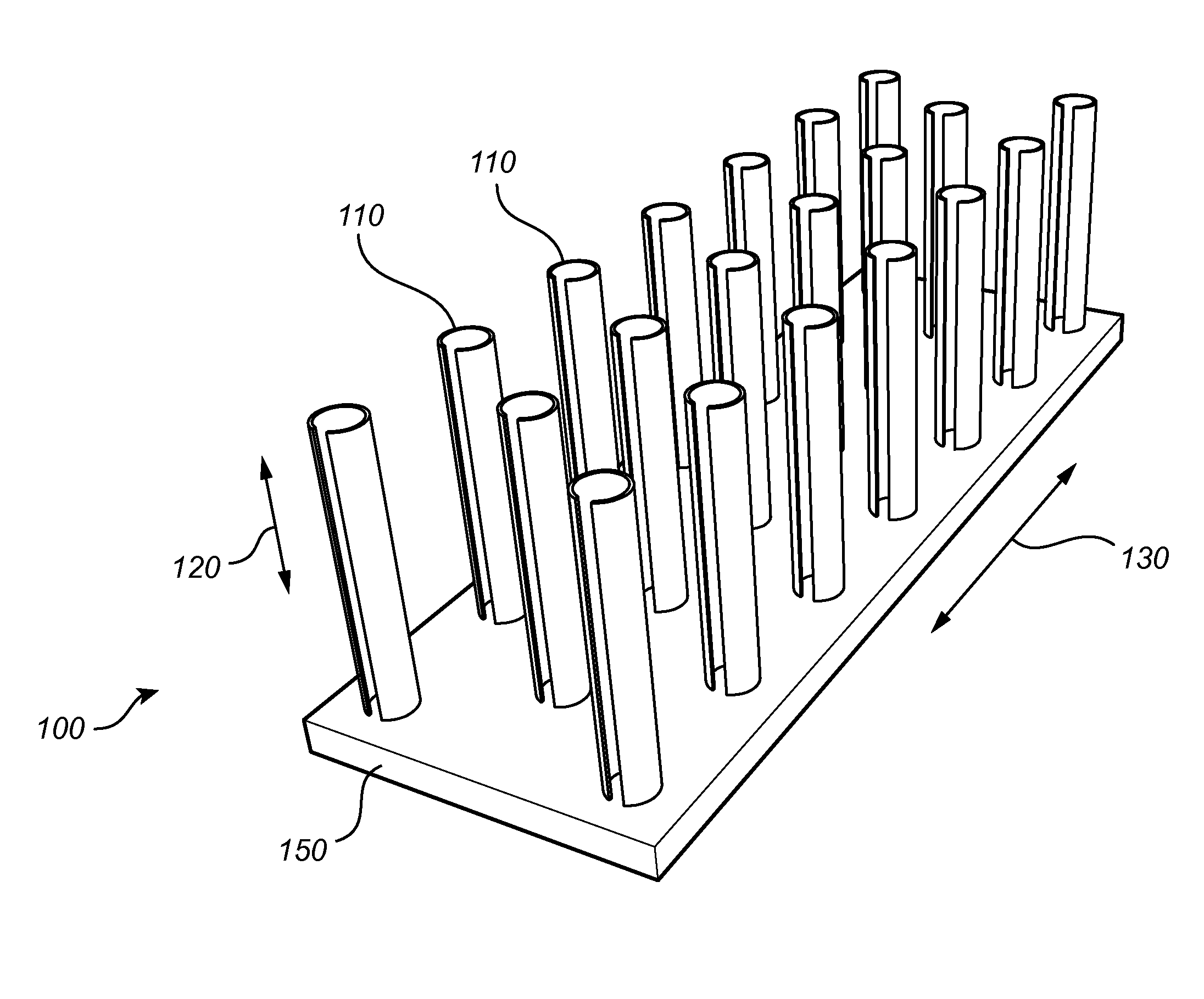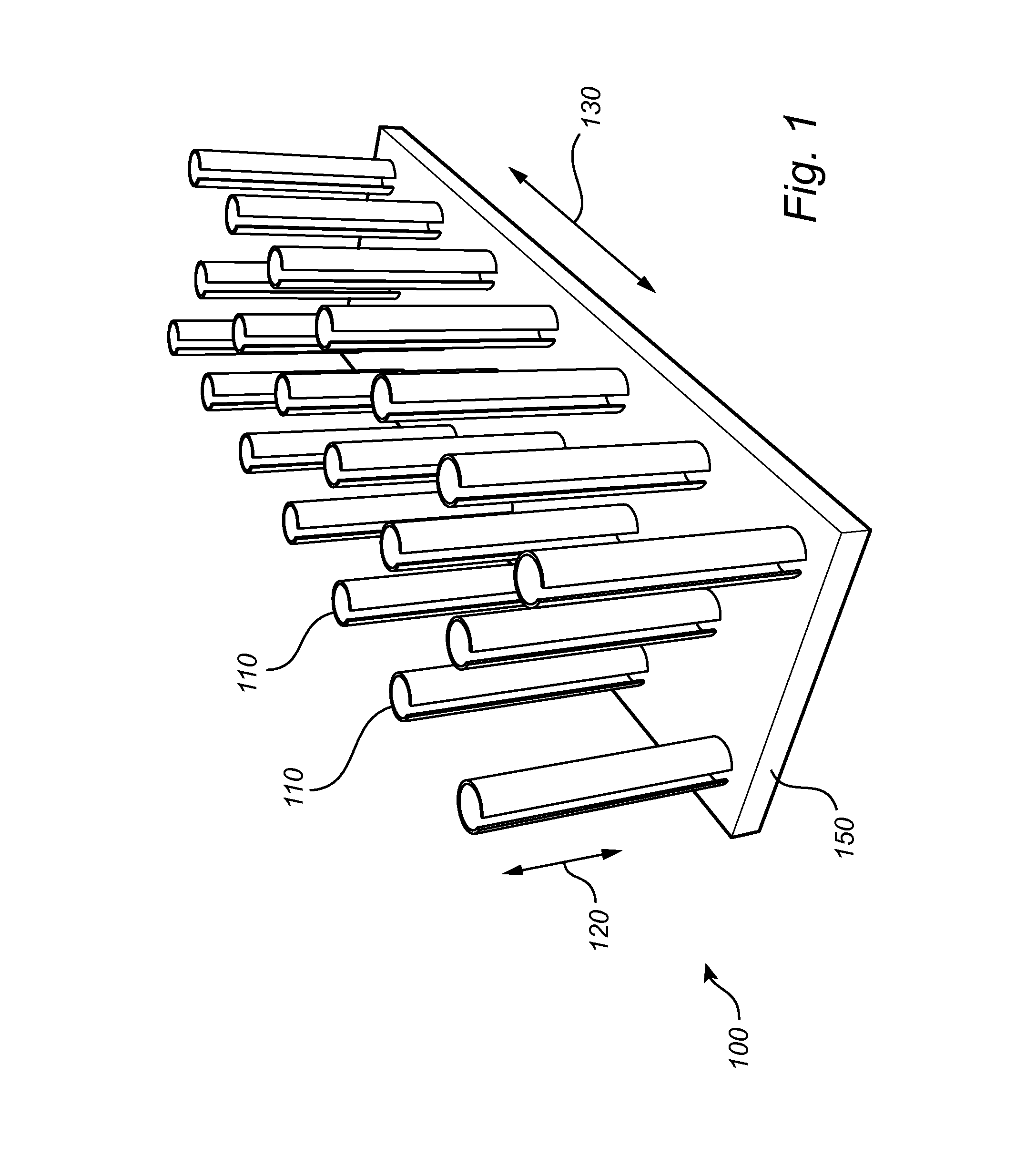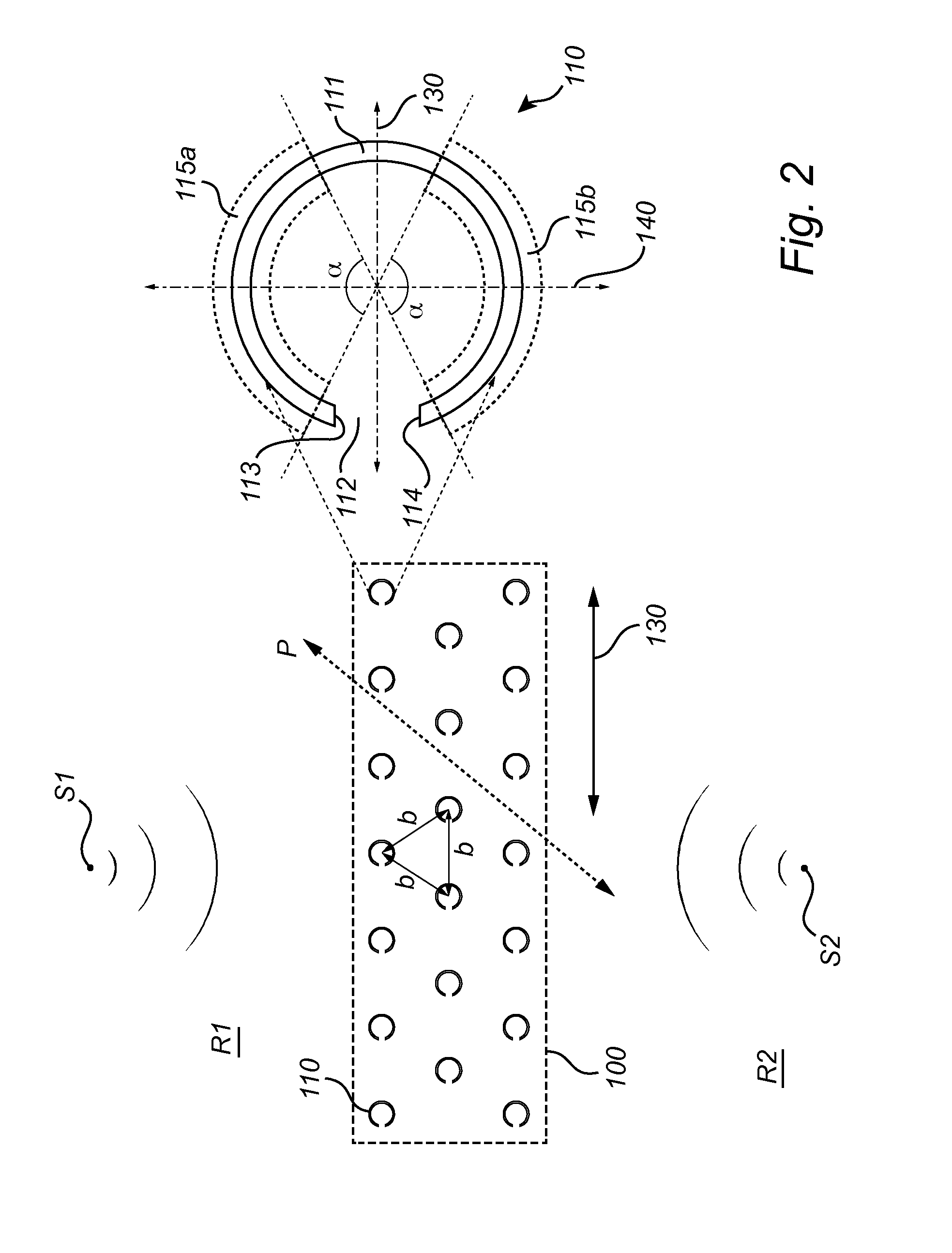Acoustically absorbing room divider
a room divider and acoustically absorbing technology, applied in the field of acoustically absorbing room dividers, can solve the problems of destructive interference of scattered sound waves, and achieve the effects of increasing visibility, facilitating provision of more uniform illumination, and increasing visibility through the room divider
- Summary
- Abstract
- Description
- Claims
- Application Information
AI Technical Summary
Benefits of technology
Problems solved by technology
Method used
Image
Examples
Embodiment Construction
[0039]The present aspect will now be described more fully hereinafter with reference to the accompanying drawings, in which currently preferred embodiments are shown. This invention may, however, be embodied in many different forms and should not be construed as limited to the embodiments set forth herein; rather, these embodiments are provided for thoroughness and completeness, and fully convey the scope of the present aspect to the skilled person.
[0040]A room divider according to an embodiment will be described with reference to FIGS. 1 and 2. The room divider 100 is adapted to divide at least a portion of a room into two sub-portions R1, R2, and is adapted to attenuate sound S1, S2 travelling between the two sub-portions R1, R2. The room divider 100 comprises a plurality of hollow cylindrical elements 110 arranged periodically for dividing the portion of the room into the two sub-portions R1, R2. At least some of the hollow cylindrical elements 110 have a cylindrical shell 111 (s...
PUM
 Login to View More
Login to View More Abstract
Description
Claims
Application Information
 Login to View More
Login to View More - R&D
- Intellectual Property
- Life Sciences
- Materials
- Tech Scout
- Unparalleled Data Quality
- Higher Quality Content
- 60% Fewer Hallucinations
Browse by: Latest US Patents, China's latest patents, Technical Efficacy Thesaurus, Application Domain, Technology Topic, Popular Technical Reports.
© 2025 PatSnap. All rights reserved.Legal|Privacy policy|Modern Slavery Act Transparency Statement|Sitemap|About US| Contact US: help@patsnap.com



